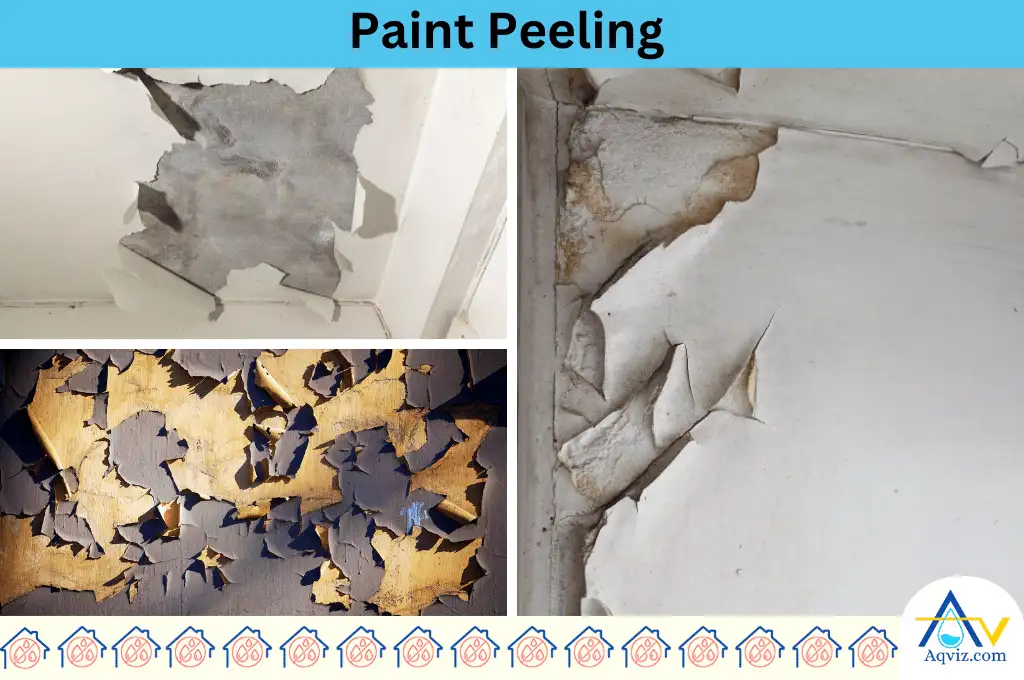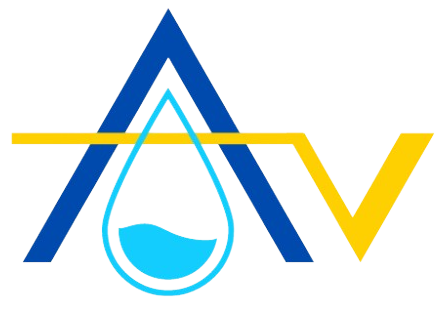8 Water Damage in the House: Reasons, Impacts and Preventions
Water damage in a house refers to the destruction or deterioration of a home’s structure, furnishings, or contents caused by excessive water or moisture. Water can accumulate in the house due to factors such as burst pipes, leaking roofs, faulty appliances, poor drainage, and foundation cracks. These issues increase water and moisture levels, leading to 8 severe water damage in the house.
These are the 8 severe water damage in the house
- Mold and mildew growth in the house
- Water stain marks in the house
- Musty and earthy odor in the house
- House wood rotting
- House metal corrosion
- House material decaying
- Home material erosion
- Paint peeling in the house
These water damages cause to structural weakening, mold and mildew growth, damage to personal belongings, and potential health risks due to mold exposure. To prevent these water damages water issues should be fixed and the building envelope should be waterproofed using a waterproofing membrane.

What are the Water Damages and Negative Impacts on the House?
These are the 8 most negatively impacted water damage in the house.
- Mold and mildew growth in the house
- Water stain marks in the house
- Musty and earthy odor in the house
- Wood rotting in the House
- Metal corrosion in the House
- Material decaying in the House
- Material erosion in the House
- Paint peeling in the house
1. Mold and Mildew Growth in the House
The mold growth in the house is growing a fungal colony on the walls, basement, slabs, columns, home fixtures, and appliances in the house. Molds are microscopic organisms that grow in wet or damp environments and spread as a colony. Molds can grow on various materials in the house, like wood, carpets, paper, furniture, insulation, and food. Molds and mildew produce a musty and earthy smell, which is unpleasant and unhealthy. Mold and mildew negatively affect on the home structure and humans.
Negative impacts of mold and mildew growth in the house
- Increase health issues such as allergies, asthma, and other respiratory problems.
- Structural damage to the home.
- Decrease in property value.
- Unpleasant odors.
- Increased costs for mold remediation and repair.

2. Water Stain Marks in the House
Water stain marks in the house are discolored blemishes that are often found on walls, ceilings, and floors due to prolonged exposure to water or moisture. Stain marks can occur due to roof leaks, plumbing leaks, condensation, flooding, and poor ventilation in the home. The stain marks in the house cause many negative effects.
Negative impacts of water stain marks in the house
- Devalues the home
- Causes structural damage
- Leads to mold and mildew growth
- Ruins aesthetic appeal
- Potentially hazardous to health

3. Musty and Earthy Odor in the House
Musty and earthy odor in the house is a strong, unpleasant smell in the house due to dampness, mold, and mildew growth. This unpleasant odor can happen due to prolonged water leakage, basement flooding, lack of proper ventilation, dust, and dirt accumulation in hard-reached areas. This bad smell can cause many negative impacts on the humans.
Negative impacts of Musty and Earthy odor in the house
- Potential health risks include respiratory problems, allergies, or infections.
- Decreased comfort and enjoyment of living space.
- Potential damage to the structure of the house.
- Decreased property value.
- Increased difficulty in selling or renting the house.
4. Wood Rotting in the House
House wood rotting is the decay and degradation of wooden structures in the home due to fungal growth in the wood tissue. Wood rotting is a common problem in the wooden parts of the house, which are continuously exposed to water.
Negative impacts of House Wood rotting
- Structural damage to the house.
- Decrease in property value.
- Potential health risks due to mold and mildew.
- Increased repair and replacement costs.
- Attraction of pests like termites and beetles.

5. Metal Corrosion in the House
House metal corrosion is a gradual degradation or destruction of metals in the house due to the reaction of water in the house. Structural steel supports, machines, tools and instruments, wiring, furniture, and home appliances are the most damaged metals in the home due to water.
Negative Impacts of House Metal Corrosion
- Structural damage to the house
- Increased risk of electrical faults or fires
- Potential for water leaks from corroded pipes
- Decreased value of the property
- Increased maintenance and repair costs

6. Material Decaying in the House
House material decay is a deterioration process where the structural components of a house, such as wood, metal, concrete, and other materials due to water. This can lead to serious structural issues and even potential health hazards.
Negative impacts of the house material decaying
- Decrease in property value
- Increase in repair and maintenance costs
- Potential health hazards
- Structural instability and safety risks
- Decrease in aesthetic appearance
7. Material Erosion in the Home
Home material erosion is the gradual degradation or wear and tear of the materials used in the construction and finishing of homes due to water flow. This can happen over time when the water is flowing through the materials.
Negative impacts of home material erosion
- Decrease the property value
- Increase in maintenance and repair costs
- Structural instability and potential collapse
- Health hazards due to exposure to damaged materials
- The aesthetically unpleasant appearance of the home

8. Paint Peeling in the House
Paint peeling is the cracking, lifting, and flaking of the paint on the walls, ceiling, and other painted surfaces due to water and its substances. Mostly, paint peeling can happen due to water damage.
Negative impacts of paint peeling on the house
- Damages the aesthetic appeal of the house
- Can expose underlying material to damage
- May lead to higher maintenance costs
- Can lower the value of the house
- Potential health risks from ingesting or inhaling peeling paint particles, especially if the paint is lead-based

What are the 7 Reasons for Water Damage In the House?
These are the most important 7 reasons for the water damage in the house.
- Higher water table near the basement: A higher water table around the property increases seepage and capillary rise into the basement walls and floor. This raises moisture and humidity levels, encouraging mold colonies, peeling paint, salt efflorescence, and even concrete spalling overtime.
- Roof leaks : Damaged shingles, clogged gutters, or flashing gaps allow rainwater to penetrate the roof deck, soaking insulation, rafters, and ceilings. This causes brown stain rings, sagging drywall, and wood rot in roof trusses. In cold climates, ice damming can also force water back under the shingles, worsening the damage.
- Plumbing failures near walls and floors: Burst pipes, faulty water heater valves, and leaking supply lines can flood kitchen floors, bathroom walls, and under-sink cabinets. We’ve repaired homes where a pinhole leak inside the wall cavity created hidden mold growth covering over 5 m² before detection.
- Faulty window and door sealings: Cracked caulking, worn weatherstrips, and improper flashing allow wind-driven rain to infiltrate around windows and doors. Over time, this weakens plaster near the openings, causes discoloration on interior paint, and rots the wooden frames.
- Clogged or broken drainage system: Blocked surface drains or broken underground pipes cause standing water near the foundation. This adds hydrostatic pressure on basement walls, forcing moisture through even the smallest hairline cracks. In extreme cases, it erodes soil under driveways and pathways, leading to sinking or uneven settlement.
- Balcony and terrace membrane failure: When balcony or terrace waterproofing membranes crack or blister, rainwater seeps through to the rooms below. We’ve seen false ceilings collapse due to trapped water pockets that built up over months after a failed polyurethane coating.
- Poor ventilation: High humidity from showers, cooking, and laundry without proper exhaust fans causes condensation on walls and ceilings. This moisture supports mildew growth, peels paint, and damages wooden cabinets. In one home, constant steam in a poorly vented bathroom caused a swollen door frame that no longer closed properly.
How to Prevent Water Damage In the House?
You should follow these 5 way to prevent water damage in the home.
- Install a waterproofing membrane: You should install a waterproofing membrane in the basement, bathroom, concrete, and specific areas that tend to be regularly wet and pool. Building waterproofing helps to prevent the spread of accumulated water over the floors, walls, and ceiling in the house, which causes water damage.
- Ensure proper roof maintenance: You should inspect the roof at least once a year for damaged or missing shingles. You should clear the gutters and downspouts regularly to prevent water buildup that could lead to leaks and water damage.
- Install a sump pump: You should install a sump pump in the basement. A sump pump helps prevent basement flooding by automatically pumping out excess water that accumulates during heavy rains or due to groundwater.
- Seal doors and windows: You should seal doors and windows using caulk or weatherstripping around door and window gaps and spaces to prevent water from seeping in during storms.
- Improve the drainage system in the home: You should improve the drainage system around the home to ensure that the ground slopes away from the foundation.
